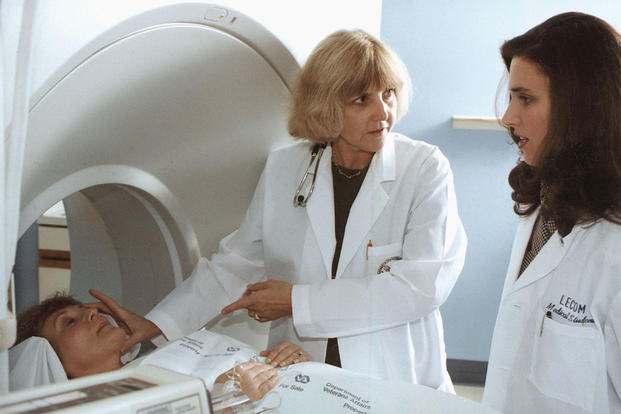If you think that getting into a radiologic technology (RT) education program should be easy given the shortage of rad tech professionals, think again. The fact is that RT programs are turning away would-be students who don't meet what is often the strict criteria for admission.
"It is not easy to get in," says Jane Saball, a student at Bethesda Memorial Hospital's radiography school in Boynton Beach, Florida. "These programs are not just looking for anybody. They're looking for the cream of the crop."
Before she was accepted into her program, Saball, who is changing careers to RT, returned to college to earn specific credits. She also obtained some healthcare experience to strengthen her application. Saball is now on track to earn a certificate of completion in RT in 2008.
Application Levels Affected By Costs
For the 2006-2007 academic year, 95 people applied for just 12 openings at the University of Nebraska Medical Center's RT program, according to Connie Mitchell, MA, RT(R)(CT), the school's radiography program director. For the 2007-2008 year, "we're down just a bit but still had about 60 applicants," says Mitchell, president of the American Society of Radiologic Technologists (ASRT).
Bill May, MEd, RT(R), FASRT, program director at MedVance Institute in Cookeville, Tennessee, says the private programs are more expensive but tend to be easier to get into. At MedVance, about 60 percent of applicants are accepted, May reports.
"Most of the state-sponsored programs have [prerequisites], and since the tuition is much less, [application levels] are much higher," he says. "At a community college last year, we had over 300 applicants and only accepted 19 students."
Some programs accept students on a first-come, first-served basis, while others go by the point system for entry. At the University of Nebraska, for example, Mitchell awards applicants points based on their work toward completing prerequisites that include 35 credit hours of basic science, math and English. Interviews, written narratives, healthcare experience and other factors are also used to evaluate candidates.
Wow the Admissions Committee
To boost your chances of getting accepted into an RT program, experts offer these tips:
Keep Up Your Grades: Educators look for high grade point averages -- especially in high school and college math and science courses. Mitchell looks for GPAs in the 3.2 to 3.6 range. For applicants to community or state-sponsored colleges, May says that the only way students get accepted is if they have from 12 to 26 semester hours of credit of specific general-education courses and have almost straight As in those courses.
Apply for the Right Reasons: Jan Clark, MEd, RT(R)(CV)(M)(QM), says educators are looking for people suited to healthcare. "In terms of interpersonal skills, it is that desire to help others," says Clark, ASRT national education chapter delegate. "The students who tend not to do well are the ones that come to the programs for the wrong reasons [such as salary]."
Have Computer/Technology Skills: Since radiography is a technology-focused career, applicants should have a comfort level with technology, Clark says.
Hone Your Interview Skills: Many programs require applicants to interview with faculty. Before her interviews, Saball researched industry trends and the specific programs she was applying to. The preparation helped convey her interest, desire and ambition. Be prepared with questions for the program faculty, Mitchell says. For instance, you might ask about similarities or differences with other programs you're considering.
Choose References Wisely: Mitchell recommends listing college professors, high school instructors and employers as references instead of friends or relatives.
Volunteer or Job-Shadow: Know what the profession has to offer and what your career goals are, Mitchell says. In addition to observing in a radiology department at a hospital, Saball volunteered at a hospital emergency room, which gave her the direct patient-care experience she needed to earn more points.
Apply to More Than One Program: Saball applied to three and was accepted to one.
Be Persistent: Besides submitting her completed applications on time, Saball followed up with schools to show initiative.











